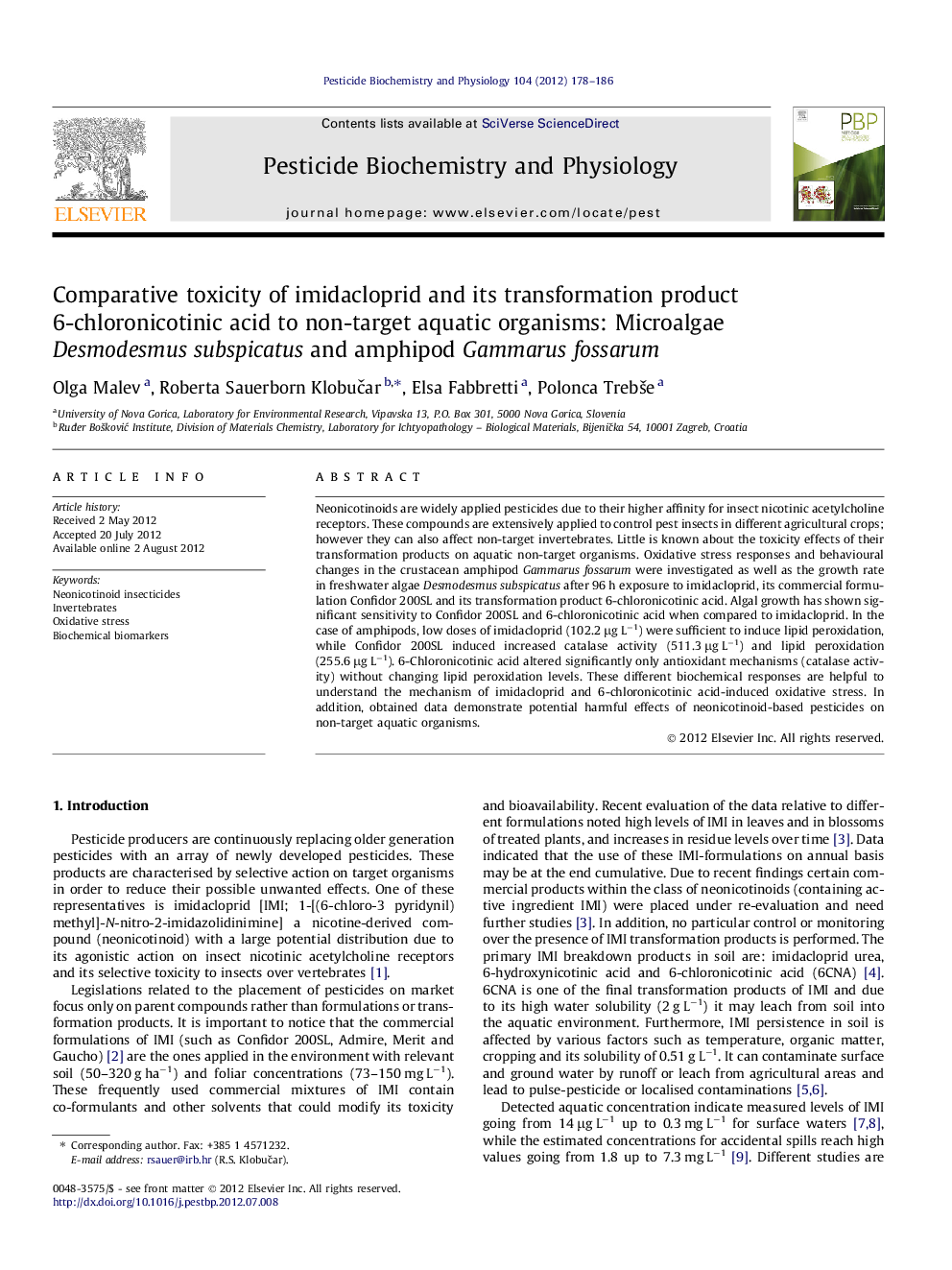| Article ID | Journal | Published Year | Pages | File Type |
|---|---|---|---|---|
| 2009589 | Pesticide Biochemistry and Physiology | 2012 | 9 Pages |
Neonicotinoids are widely applied pesticides due to their higher affinity for insect nicotinic acetylcholine receptors. These compounds are extensively applied to control pest insects in different agricultural crops; however they can also affect non-target invertebrates. Little is known about the toxicity effects of their transformation products on aquatic non-target organisms. Oxidative stress responses and behavioural changes in the crustacean amphipod Gammarus fossarum were investigated as well as the growth rate in freshwater algae Desmodesmus subspicatus after 96 h exposure to imidacloprid, its commercial formulation Confidor 200SL and its transformation product 6-chloronicotinic acid. Algal growth has shown significant sensitivity to Confidor 200SL and 6-chloronicotinic acid when compared to imidacloprid. In the case of amphipods, low doses of imidacloprid (102.2 μg L−1) were sufficient to induce lipid peroxidation, while Confidor 200SL induced increased catalase activity (511.3 μg L−1) and lipid peroxidation (255.6 μg L−1). 6-Chloronicotinic acid altered significantly only antioxidant mechanisms (catalase activity) without changing lipid peroxidation levels. These different biochemical responses are helpful to understand the mechanism of imidacloprid and 6-chloronicotinic acid-induced oxidative stress. In addition, obtained data demonstrate potential harmful effects of neonicotinoid-based pesticides on non-target aquatic organisms.
Graphical abstractFigure optionsDownload full-size imageDownload as PowerPoint slideHighlights► Comparative toxicity of imidacloprid and its product 6-chloronicotinic acid. ► Higher toxicity effects of imidacloprid as commercial formulation. ► Imidacloprid and its transformation product influenced oxidative stress biomarkers. ► Behavioural alterations in amphipods and adverse effects on algae growth.
